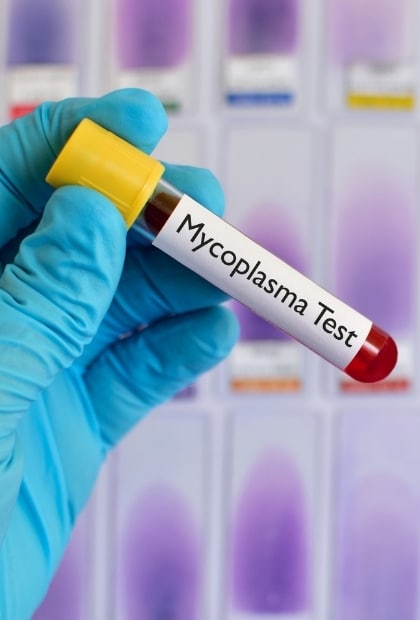According to the World Health Organisation (WHO) “more than 1 million sexually transmitted infections (STIs) are acquired every day worldwide.” Most are asymptomatic. (1). There are over 30 viruses, parasites and bacteria that can be transmitted through sexual contact. Among the above mentioned thirty pathogens, there are eight that are known to cause most of the sexually transmitted diseases. However, yet only four out of these eight are curable: trichomoniasis, gonorrhoea, chlamydia, and syphilis. The incurable ones are human papillomavirus (HPV), hepatitis B, HIV, and herpes simplex virus (HSV).
Sexually Transmitted Infections (STIs)
What happens in Australia
More than 15% of Australians report that they had a sexually transmitted infection at least once in their lifetime (2). Moreover, these sexually transmitted infections are still the most frequently reported conditions to the Australian National Notifiable Diseases Surveillance System and for some of them, there is an increasing tendency (3). However, Australia managed to reduce the incidence of some STIs through vaccination and some other public health strategies (4).
Ways of infection
There are several ways of transmission for the sexually transmitted infections. The main way of transmission is sexual contact, which can be either vaginal, anal, and oral sex. Research has shown that several sexually transmitted infections spread without sexual contact via blood and its products blood products. In addition, some of the most common sexually transmitted infections like gonorrhoea, herpes, hepatitis B, HIV, syphilis, chlamydia, and HPV—can also be transmitted during pregnancy or childbirth in case the mother is infected by one of the above mentioned STIs (1).


Diagnosis of STIs
Nowadays, Australia is using reliable diagnostic tests for STIs and aims to diagnose the asymptomatic infections. However, such tests might be expensive and/ or inaccessible in remote and rural areas or patients might need to wait a long time until they are informed about the results. It is worth mentioning that there are some low-cost rapid tests available for specific sexually transmitted diseases like HIV and syphilis (1).
In the next lines, I will present some information about some of the common STIs in Australia.
Chlamydia
In 2017, the total of chlamydia notifications in Australia was 100,775 (5). Chlamydia incidence is higher in HIV‑positive gay and bisexual men, 1.6 times as high as in HIV‑negative gay and bisexual men. It can be an asymptomatic infection. However, when there are symptoms women would suffer from cervicitis or urethritis, meaning endocervical bleeding or increased urinary frequency, pyuria, difficulty to urinate, etc. The most common symptoms among men infected by chlamydia are urethritis- related like mucoid urethral discharge, burning sensation during urination (6). The complications mainly can be more serious for females compared to males. As mentioned earlier there is the danger of pelvic inflammatory disease which is found in more than 10% of untreated chlamydia infected women (7-8). Antibiotics can totally treat the disease and avoid any kind of complications (9-10).
Gonorrhoea
Gonorrhoea is caused by infection with the bacterium Neisseria gonorrhoeae (11). In Australia most of the gonorrhoea notifications were males. Epidemiological data show that in the year 2017, gonorrhoea notification rates were higher in the Northern Territory (5). Gonorrhoea usually affects the male urethra, rectum, or throat. In females, gonorrhoea can also infect the cervix. Therefore, it can spread during vaginal, anal sex, and oral sex. Additionally, babies can be infected by their mothers during childbirth and in this case, gonorrhoea affects the eyes. The rate of gonorrhoea is higher among men who have sexual contact with other men (12). Antibiotics can fully treat the disease and avoid any kind of complications (13).
Mycoplasma
Lately, knowledge about Mycoplasma is rapidly increasing. Mycoplasma infection can affect females causing inflammation of the cervix and pelvic inflammatory disease which can potentially cause either infertility or miscarriage and preterm delivery. In addition, Mycoplasma genitalium is an infection known to cause urethritis in males (4). There is a challenge on the detection of mycoplasma, since the nucleic acid amplification tests are only offered in larger laboratories. On top of that, there is not high validity among these tests because they are restricted to samples for urogenital sites, however, there is quite high prevalence of the infection in anorectal sites. Another challenge that Australia faces is that although the treatment of mycoplasma is based on antibiotics, mycoplasma genitalium is increasingly resistant to effective antibiotics (4, 14).


Syphilis
In 2017, in Australia, there were 4398 notifications of infectious syphilis, with the majority 85% in males. Between the years 2013–2017, the notification rate of infectious syphilis increased by 135%. This increase was much higher in females (309%). According to the Australian national statistics, infectious syphilis notification rates were highest in people aged 25–29 years (5). Almost half of the people with syphilis have no symptoms. Syphilis can cause meningitis, neonatal death, genital ulceration, and affect the neurological and cardiovascular system. During the last decade, there has been an outbreak of syphilis in Australia mainly among Aboriginal and Torres Strait Islander youngsters. Penicillin can fully treat the disease and avoid any kind of complications (15).
HIV
According to the 2017 national data, 27,545 people were estimated to be living with HIV in Australia (16). 63% of HIV notifications were attributed to sexual contact between men. Initially, most people have no symptoms or seroconversion illness which occurs around about 2 weeks after infection. This illness is characterised by fever, headache, rash, swollen lymph glands, sore throat, etc. (17). HIV can be initially diagnosed quickly using a rapid test which gives a result within 30 minutes, but it needs to be confirmed by laboratory tests.
Untreated HIV weakens your immune system and increases the risk of developing other conditions like cancer, tuberculosis, kidney disease and others. It is worth mentioning that Australia is one of the few countries to provide chemoprophylaxis for HIV infection by a nationally subsidised program.
Take away message
Sexually transmitted diseases are a public health issue in Australia. Australia has progressed a lot on the management of STIs but the control of sexually transmitted infections to reduce the burden and cost remains a challenge. Early detection, prevention strategies and availability of treatment in the whole country are the tools that will eliminate STIs and improve public health.
References
1) Who.int. 2019. Sexually Transmitted Infections (Stis). [online] Available at: <https://www.who.int/news-room/fact-sheets/detail/sexually-transmitted-infections-(stis)> [Accessed 7 December 2020].
2) 2020. [online] Available at: <https://www.health.gov.au/health-topics/sexual-health> [Accessed 7 December 2020].
3) National notifiable diseases surveillance system [Internet]. Canberra: Australian Government, Department of Health; c2018. Reports: all diseases by state/territory; [cited 2018 Aug 15]. Available from: http://www9.health.gov.au/cda/source/rpt_2.cfm
4) Thng CCM. A Review of Sexually Transmitted Infections in Australia – Considerations in 2018. Acad Forensic Pathol. 2018;8(4):938-946. doi:10.1177/1925362118821492
5) Kirby.unsw.edu.au. 2019. HIV, Viral Hepatitis And Sexually Transmissible Infections In Australia: Annual Surveillance Report 2018 | UNSW – The Kirby Institute For Infection And Immunity In Society. [online] Available at: <https://kirby.unsw.edu.au/report/hiv-viral-hepatitis-and-sexually-transmissible-infections-australia-annual-surveillance> [Accessed 1 March 2022].
6) Bradshaw, C., Tabrizi, S., Read, T., Garland, S., Hopkins, C., Moss, L. and Fairley, C., 2006. Etiologies of Nongonococcal Urethritis: Bacteria, Viruses, and the Association with Orogenital Exposure. The Journal of Infectious Diseases, 193(3), pp.336-345.
7) Oakeshott P , Kerry S , Aghaizu A , Atherton H , Hay S , Taylor-Robinson D , Simms I , Hay P. 2010. Randomised controlled trial of screening for Chlamydia trachomatis to prevent pelvic inflammatory disease: the POPI (prevention of pelvic infection) trial. BMJ 340:c1642. doi:10.1136/bmj.c1642
8) Cates W, Jr., Wasserheit JN. Genital chlamydial infections: epidemiology and reproductive sequelae. American journal of obstetrics and gynecology 1991;164:1771-81.
9) User, S., 2020. Chlamydia – Australian STI Management Guidelines. [online] Sti.guidelines.org.au. Available at: <http://www.sti.guidelines.org.au/sexually-transmissible-infections/chlamydia> [Accessed 24 July 2020].
10) O’Connell, C. and Ferone, M., 2016. Chlamydia trachomatis Genital Infections. Microbial Cell, 3(9), pp.390-403.
11) Sti.guidelines.org.au. 2020. Home – Australian STI Management Guidelines. [online] Available at: <http://www.sti.guidelines.org.au/> [Accessed 5 December 2020].
12) Cook RL, Hutchison SL, Ostergaard L. Systematic review: Noninvasive testing for Chlamydia trachomatis and Neisseria gonorrhoeae. Ann Intern Med 2005;142(11):914–25
13) World Health Organization. 2020. WHO Guidelines For The Treatment Of <I>Neisseria Gonorrhoeae</I>. [online] Available at: <https://www.who.int/reproductivehealth/publications/rtis/gonorrhoea-treatment-guidelines/en/> [Accessed 5 December 2020].
14) Family Planning NSW. n.d. An Update On Mycoplasma Genitalium: An Emerging Cause Of Sexually Transmitted Conditions. [online] Available at: <https://www.fpnsw.org.au/media-news/media-releases/update-mycoplasma-genitalium-emerging-cause-sexually-transmitted> [Accessed 7 December 2020].
15) Hook, E., 2017. Syphilis. The Lancet, 389(10078), pp.1550-1557.
16) n.d. [online] Available at: <https://www.afao.org.au/about-hiv/hiv-statistics/> [Accessed 7 December 2020].
17) Healthdirect.gov.au. 2019. HIV Infection And AIDS. [online] Available at: <https://www.healthdirect.gov.au/hiv-infection-and-aids> [Accessed 7 December 2020].
